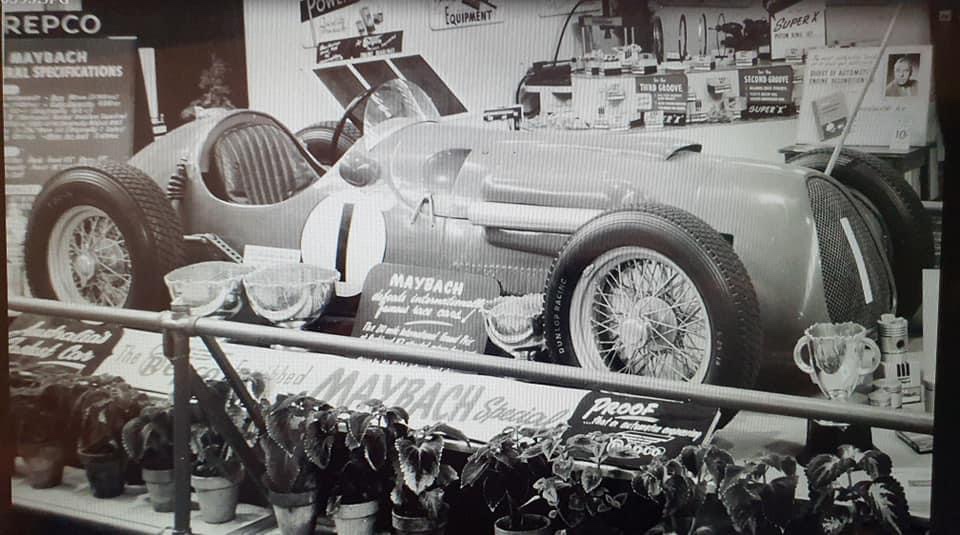
A while back I published an article about Maybach 1, the first in a series of three chassis – four cars – built by Charlie Dean/Repco Research and Ernie Seeliger between 1947 and 1958. Click on this link to that piece: https://primotipo.com/2024/01/15/maybach-1-technical-specifications/
As with that article, this one is also a copy of the technical specifications and evolution of these machines published in the Australian Motor Sports Annual 1958-59. The author’s name isn’t cited, so I’ve credited it to John Goode, the book’s editor.
The photo choices are mine, so too the are the Notes sections. I’m taking as-read a general knowledge of Maybach, but if you need a refresher, click on the links at the end of this piece.
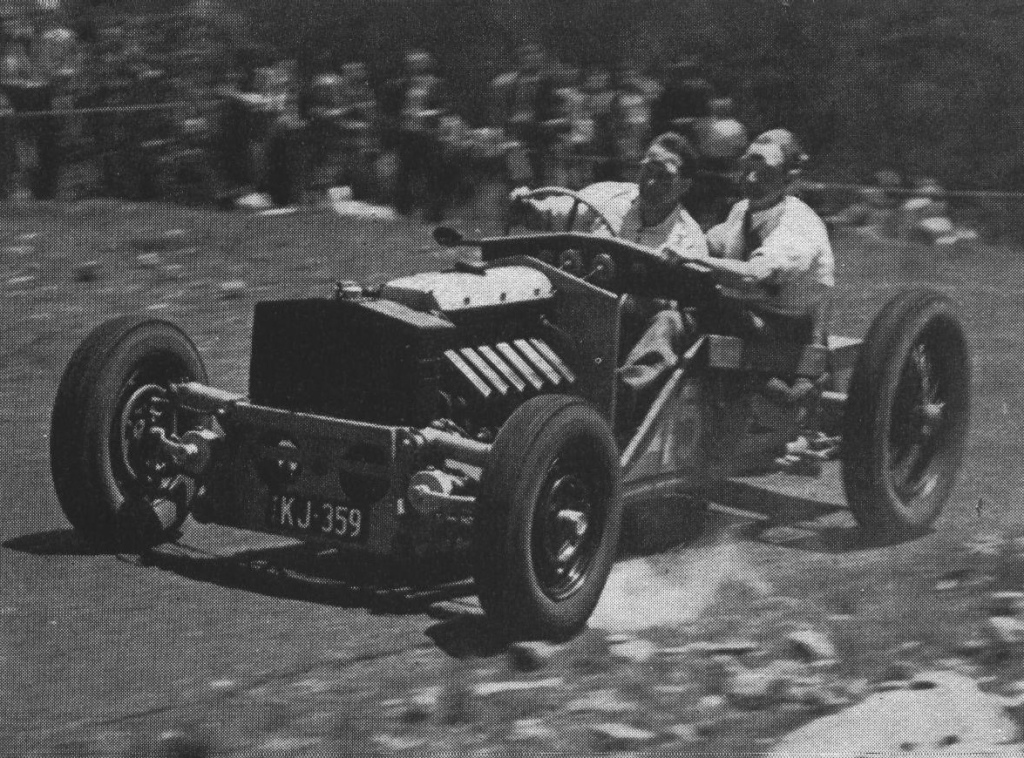
Introduction…
Here are three photographs to illustrate the journey from Maybach 1 in 1947 to Maybach 1 Series 3 – the 1954 New Zealand Grand Prix winner in Stan Jones’ hands – to get us to the start of this article, Maybach 2, which commenced its life in April 1954.
The shot above shows Charlie Dean and the brave Jack Joyce aboard Maybach 1 at Rob Roy during the Melbourne Cup long-weekend in November 1947. What a wild road car the beast would have made, the car received its body immediately prior to the 1948 Australian Grand Prix held at Point Cook, in Melbourne’s inner-west.
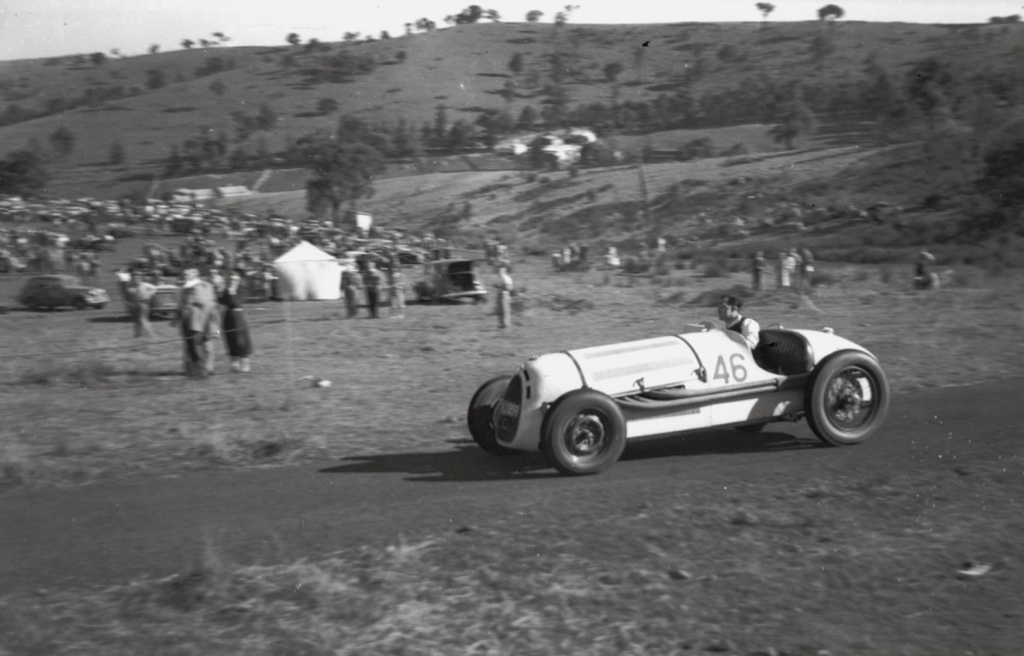
The shot above shows Dean on-the-hop at Rob Roy in 1948 – Maybach 1 painted in its original white – and below coloured blue, on test at Willsmere, near Dean’s Kew home circa 1951. And then below that, the Repco advertisement shows Maybach 1 Series 3 winning the 1954 NZ GP at Ardmore.
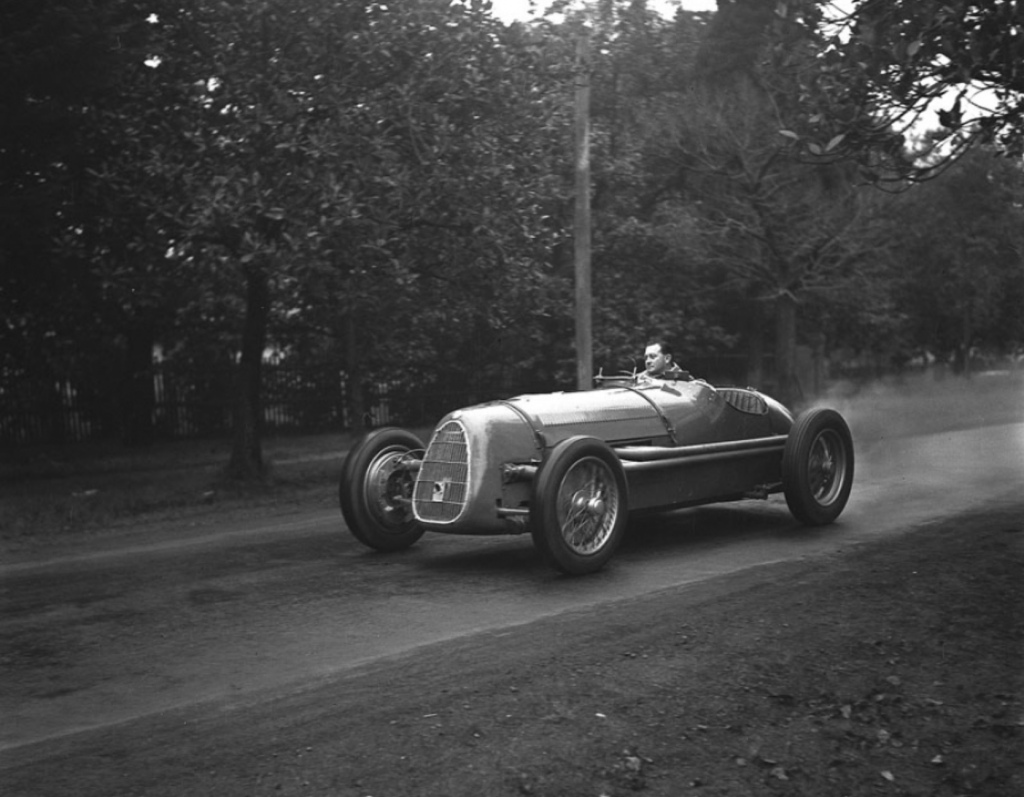

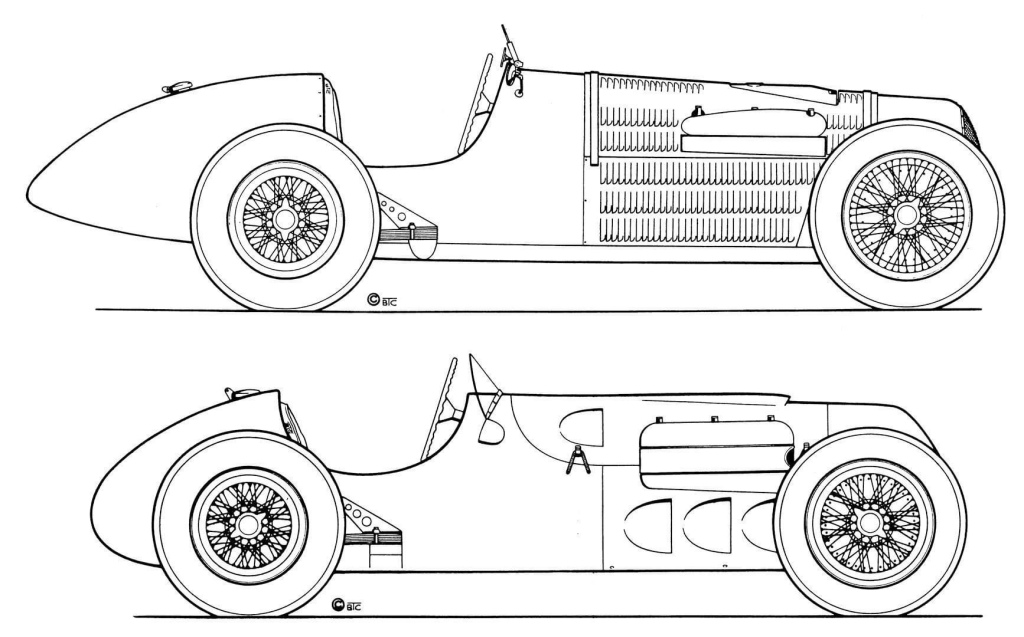
MAYBACH II (April 1954-November 29, 1954)…
ENGINE: 6 cyl. in-line single oh. camshaft. Bore and stroke: 91 × 110mm. Capacity: 4,250 c.c. Output: 257 b.h.p. at 5,000 .p.m. (bench tested). Carburettors: Three 2 3/16″ S.U. Compression Ratio: 11 to 1. Fuel used: 60% Methanol, 20% Benzol, 20% Aviation Petrol Octane rating: 110. Cast iron cylinder block with wet liners.
Single casting cast iron cylinder block and crankcase, with sump joint well below the crankshaft centre line. Crankshaft machined all over and fully counter balanced, running in eight white metal lined bearings, one between each crank throw and an extra one behind the camshaft drive pinion situated at rear end of crankshaft. Wet liners fitted to cylinder bores with lightweight balanced connecting rods and other reciprocating parts.
Single camshaft running in seven white metal bearings, opening valves by means of rocker arms fitted with eccentric bushes which could be rotated and locked to adjust valve clearances. Rockers had roller cam followers. Valves inclined at 65 degrees in hemispherical head and located on opposite sides. Helical timing gears with idler (originally compounded fabric, but replaced by steel).
Wet sump lubrication through filter with pressure fed oil supplied to centre main bearings, then to other caps, and through the crankshaft to big end bearings. Also fed to valve rocker shafts and camshaft bearings.
Complete body and chassis redesign converting it into a single seater. Mk. I Series 3 Maybach motor used.
NOTES:
The wording in relation to the chassis is misleading. Maybach 1’s chassis was set aside – tired and much modified as it was – and a new single-seater chassis was designed and fabricated for Maybach 2.
The engine came from a German half-track vehicle captured during the Middle East campaign and shipped to Australia for technical study by the military.
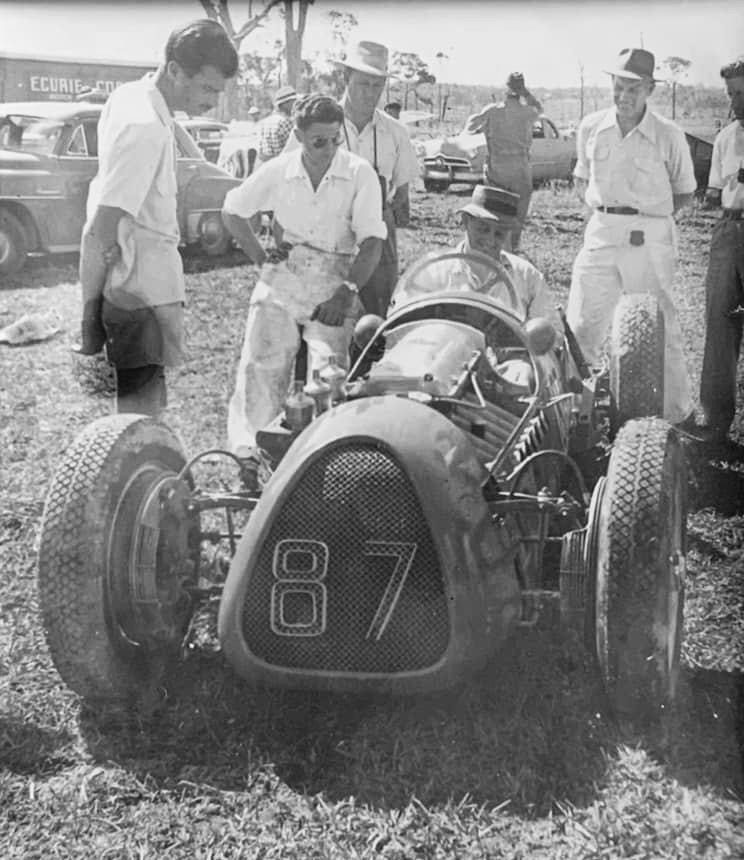
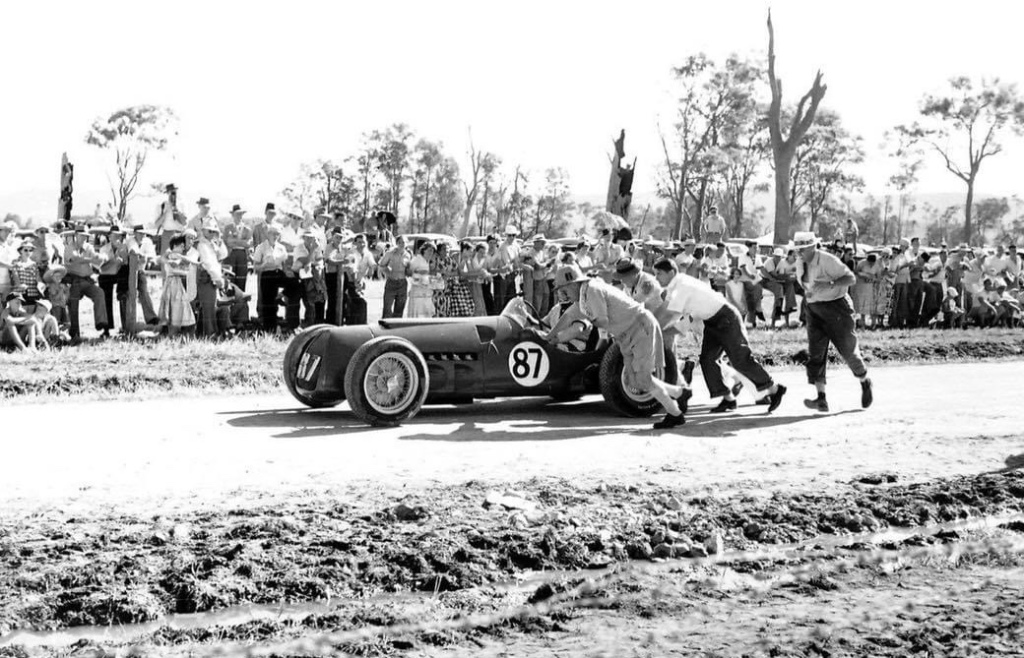
TRANSMISSION: Gearbox: four speed using Fiat 525 case with Repco manufactured gears. Ratios: First- 7.08:1 Second-4.94:1 , Third-3.78:1, Top-3.14:1.
DRIVESHAFT: Dropped to pass beneath back axle and driving a short forward shaft into differential through two helical gears, easily accessible from rear, permitting alteration to overall ratios up or down by 3%. Differential: Resembled American Four Lock locking type constructed by Repco workshops from their own and American components. Rear Axle: Vibrac type high tensile steel.
CHASSIS: Frame: Based on two 4″ dia. 16 gauge steel tubes.
Suspension: Front – Independent with wishbones and Delco shock absorbers with low placed 3 leaf traverse spring. Rear Panhard type with reversed quarter elliptic springs and torque arms anchored to heavy cross member linking two main longitudinal tubes of the chassis. Tubular Monroe Wylie shock absorbers.
Steering: Peugeot rack and pinion.
Brakes: Paton’s Hydraulic using twin parallel master cylinders, one operating front and one the rear. Action on both integral but operation separate permitting one set in action if others fail. Front shoes, twin leading design with I6in. special helically finned drums, cooled by air scoops to forward sides. Rear shoes of leading and trailing type in 14 in. drums.
Wheels: Locally constructed wire type with Rudge Whitworth hubs. Front 18″ dia. Tyres: 5.25 × 18. Rear 16″ dia. Tyres: 7.00 x 16.
Body: Single light aluminium shell easily removable in three seclions. Fuel Capacity: 25 gallons in tail mounted aluminium tank.
Dimensions: Wheelbase 94″ • Track: Front 4 ft. 3 ins. Rear 4 ft. I ins. Weight: 16 cwt. Power/weight ratio: 7 Ibs. per b.h.p.
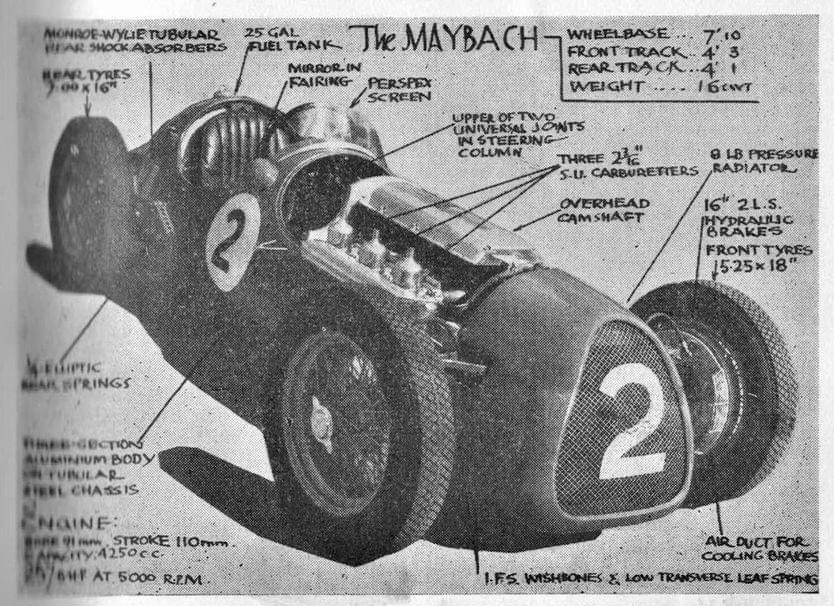
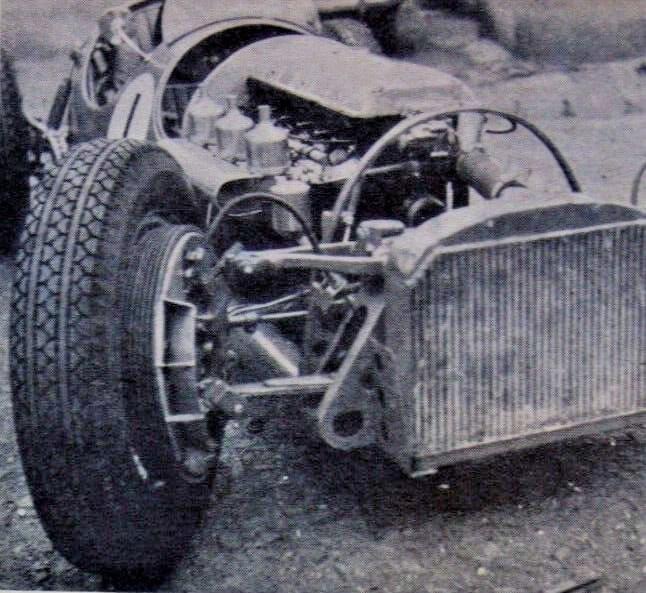
NOTES:
In many ways Maybach 2 was the one that got away…
It went like a jet from the start, Jones won the Victorian Trophy at Fishermans Bend in March 1954 on its race debut, then won again at the Easter Bathurst meeting where he took the two preliminaries before gearbox failure scuttled his run in the feature. He was victorious again at Altona in May and was second to Jack Brabham’s Cooper T23 Bristol there in June. At Fishermans Bend in October he had gearbox failure again.
Then it was off to Southport for the AGP in November where Stan simply drove away from the field until the chassis weld failure caused the massive accident that destroyed the car, and from which Jones very fortunately walked away…
This 4.2-litre 257bhp @ 5000 rpm, 725kg monoposto was one helluva fast racing car.
In the woulda-coulda-shoulda stakes were the battles we never got to see with Stan aboard Maybach 2 and Reg Hunt’s Maserati A6GCM/250 in 1955. Hunt upped the local ante big-time when he imported a current GP car, and was immediately quick in it, his talent refined with some 500cc F3 racing aboard a Cooper MkVIII in Europe in 1954.
Reg’s Maserati gave about 240bhp @ 7200rpm and weighed between 500-580kg. Both the Maserati and Maybach 2 had four-speed ‘boxes, IFS and live-rear axles. Maybach’s weakness was its ginormous, all cast iron engine which weighed circa 320kg; let’s not forget it was designed for the German military not competition use. The 250F engine’s quoted weight is 197kg, much of the weight differences between the two cars is in engine weight.
While torque figures for Maybach 2 weren’t quoted, the long stroke 4.2-litre six would have produced more torque than its twin-cam Italian competitor but not, one suspects, enough to offset the considerable weight disadvantage.
Whatever the case, when Maybach 2 was destroyed at Southport, all of the momentum gained by building, racing, and refining the car was lost. Maybach 3 (below) didn’t appear until the April 1955 Bathurst 100 weekend when the team started the process again, by which time Reg was used to and exploiting his car successfully.
What is my point? The Repco-Maybach program effectively ended post-Southport, with only one remaining engine to instal in Maybach 3, a 3.8-litre unit at that. Stan confronting Reg in 1955 aboard Maybach 2 really would have been something to see…woulda-coulda-shoulda.
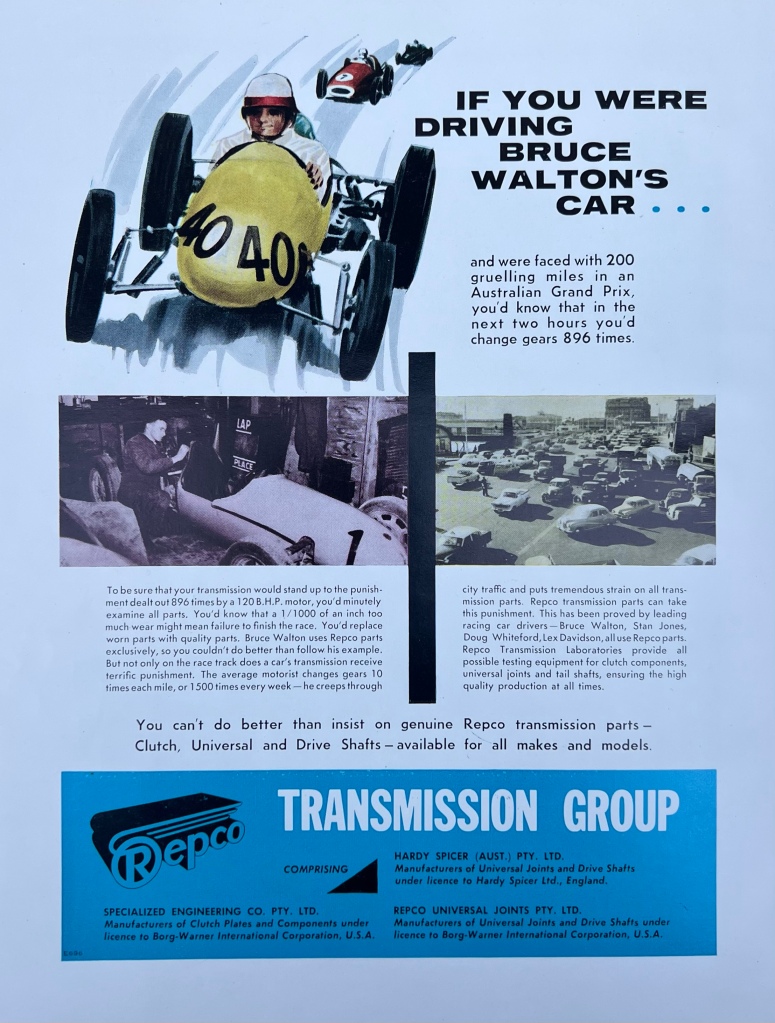
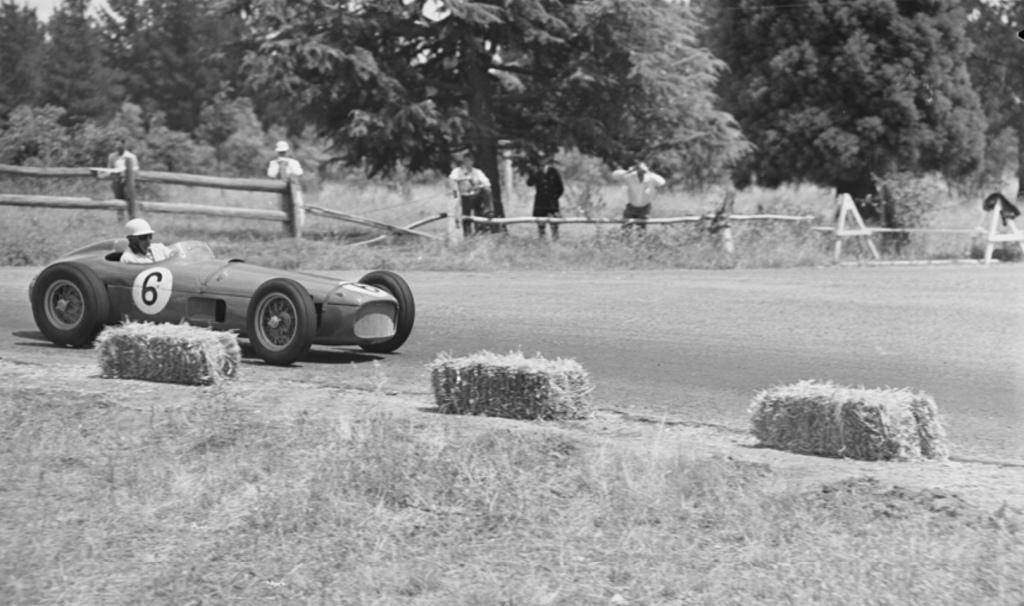
MAYBACH III (1955 – Jan 1956)…
ENGINE: 6 cyl. in-line inclined 60 degrees to left. Shortened stroke crankshaft (approx. 10% ). Bore and stroke: 90 × 100 mm. Capacity: 3,800 c.c. Compression Ratio: 11 to 1. Power Output: 260 b.h.p. at 5,000 r.p.m. Direct fuel injection by Dean and Irving.
TRANSMISSION: Clutch: Repco single plate. Gearbox: Four speed with top overall ratio 3.2 to 1. Drive: Open propeller shaft passing on right of driver to offset differential. Differential: limited slip (as previous model).
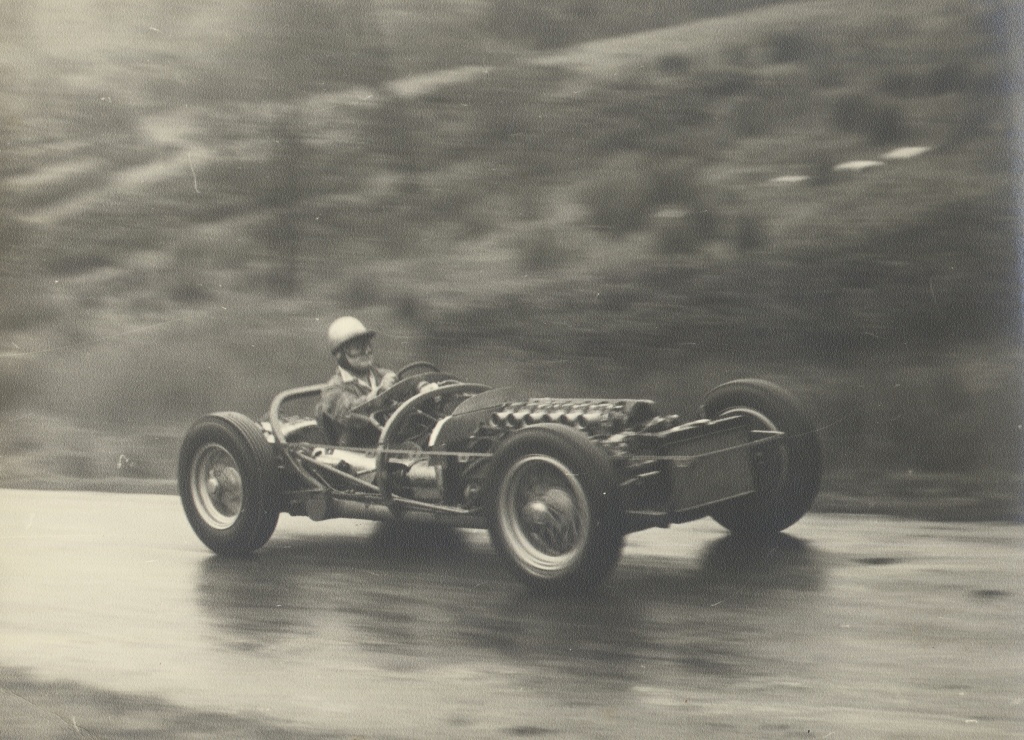
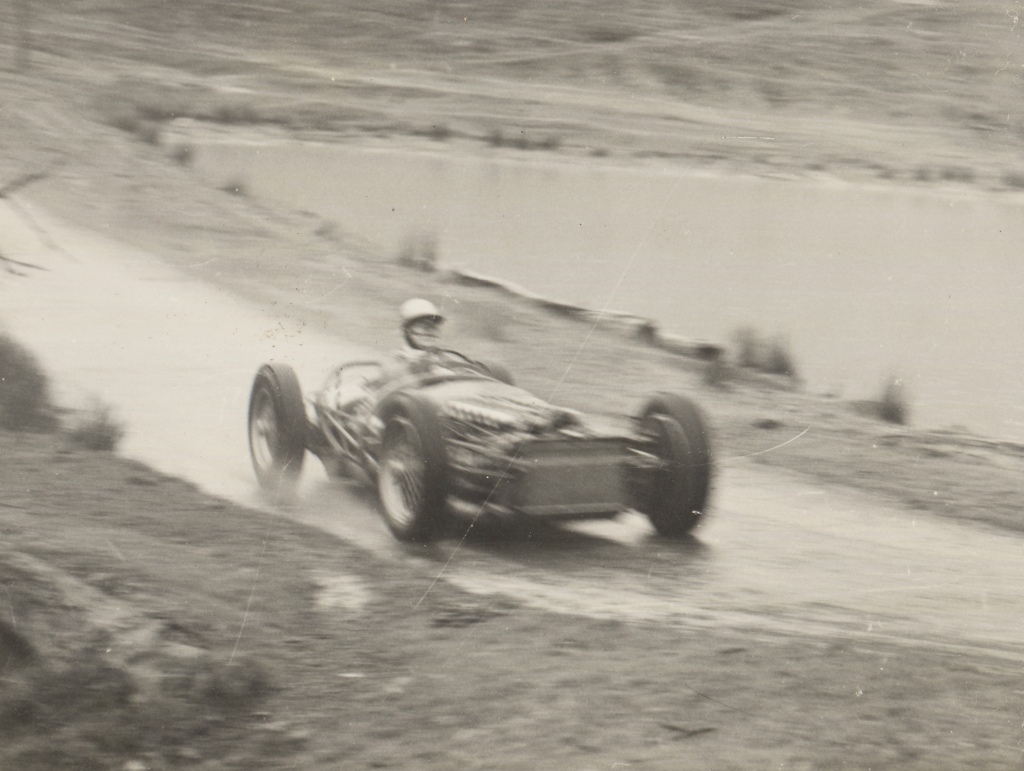
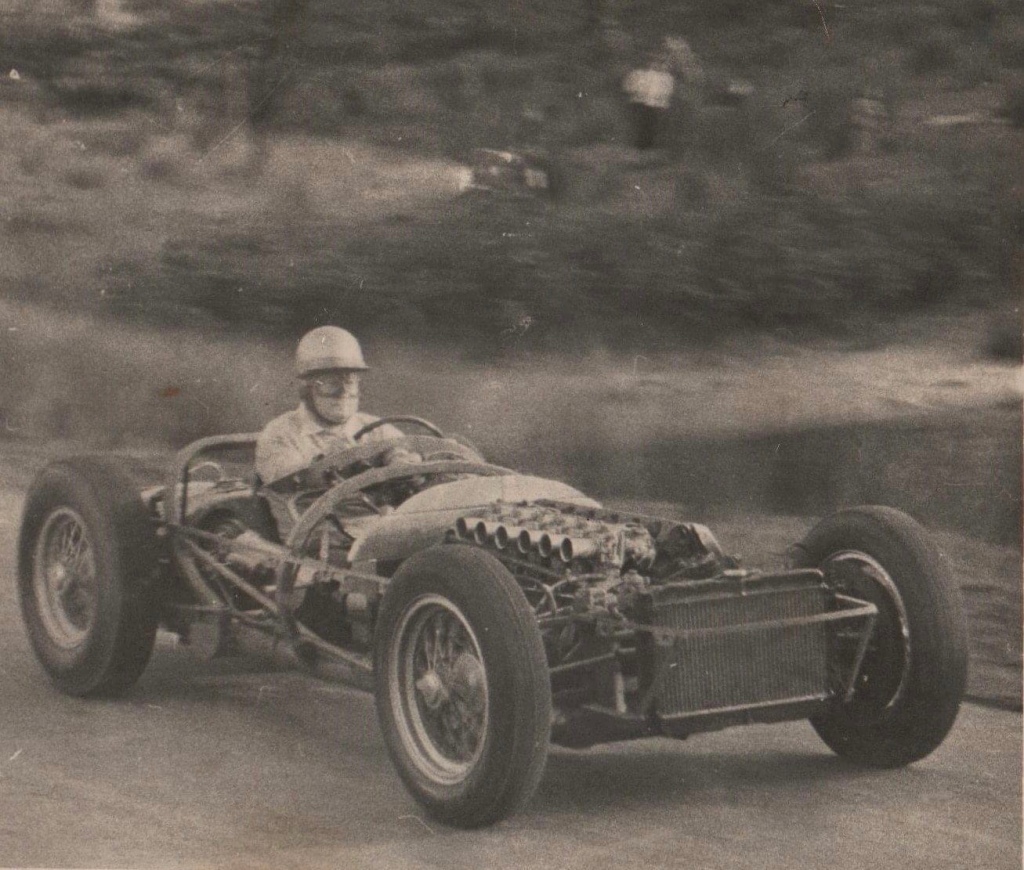

CHASSIS: Frame: Built up from two 4″ dia. steel tubes, linked by transverse tubing. Redesigned body of flatter appearance due to inclined engine.
Suspension: Front – Independent with transverse leaf spring set low. Rear Quarter elliptics with radius rods.
Dimensions: Wheelbase 95″. Track Front 4 ft. 3 ins. Rear 4 ft. 1 in. Steering: Marles box and divided track rod.
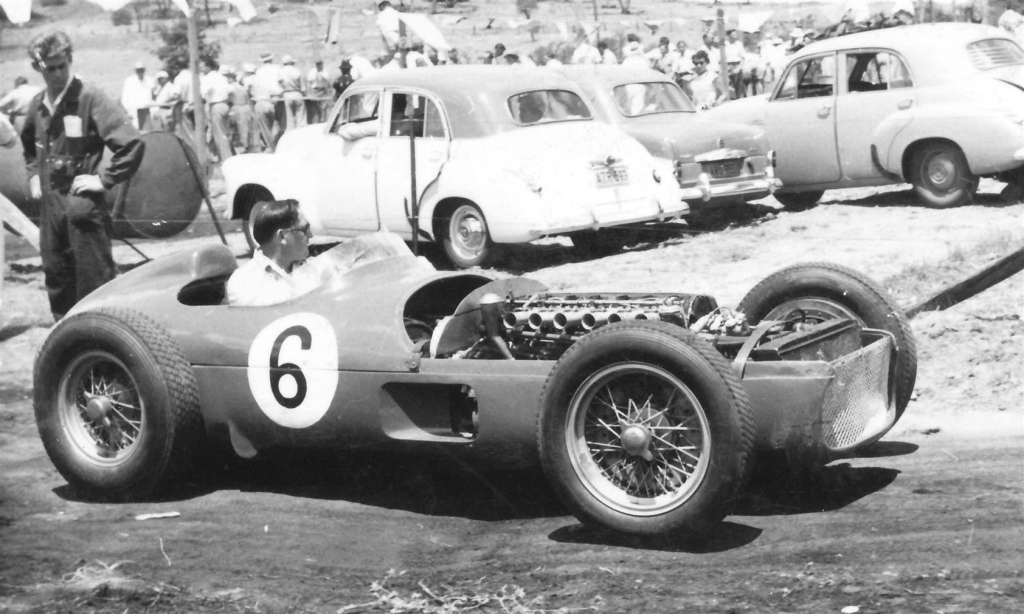
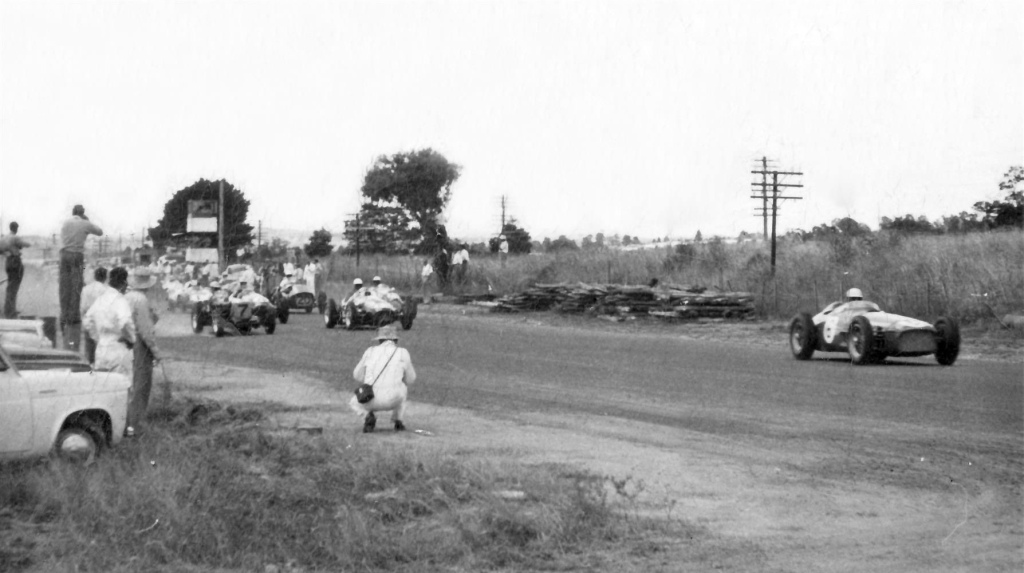
NOTES:
The beginning of the end. Jones (above) is an absolute bolter at the start of the January 1956 South Pacific Championship at Gnoo Blas, New South Wales.
Reg Hunt’s new Maserati 250F is way back here but will reel Stan in. Being pushed hard to hang onto the very best European F1 car of the day, the Maybach engine let go in a big way.
Jones had a 250F several months later. Stan let his good friend, ace engineer/mechanic/racer Ern Seeliger loose on Maybach, its evolution to Chev Corvette 283 V8 power and other modifications – Maybach 4 – was soon underway.
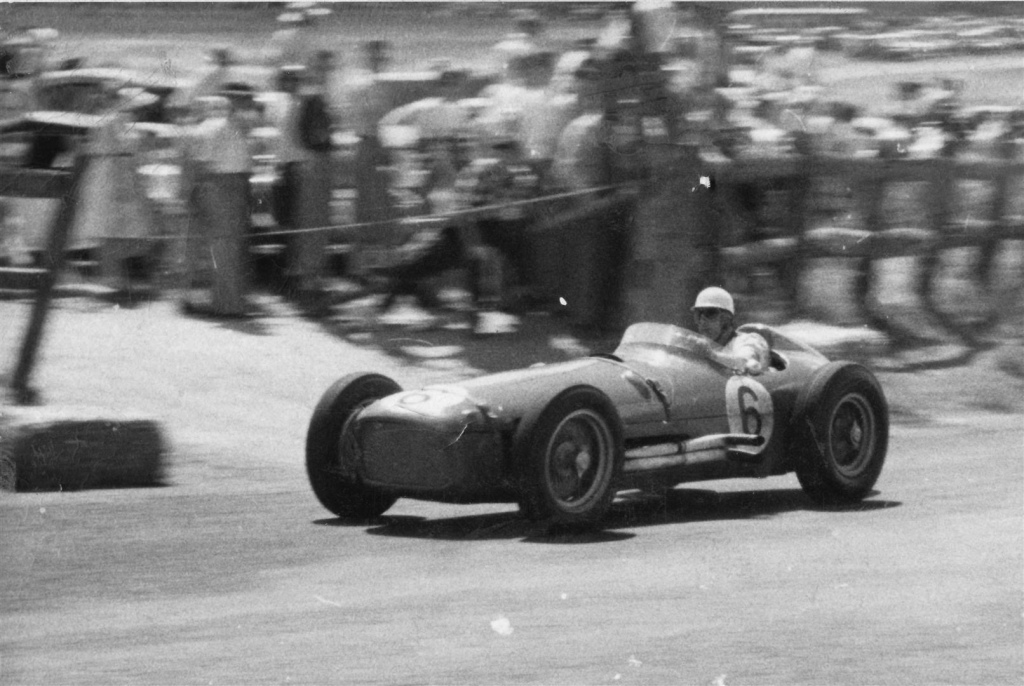
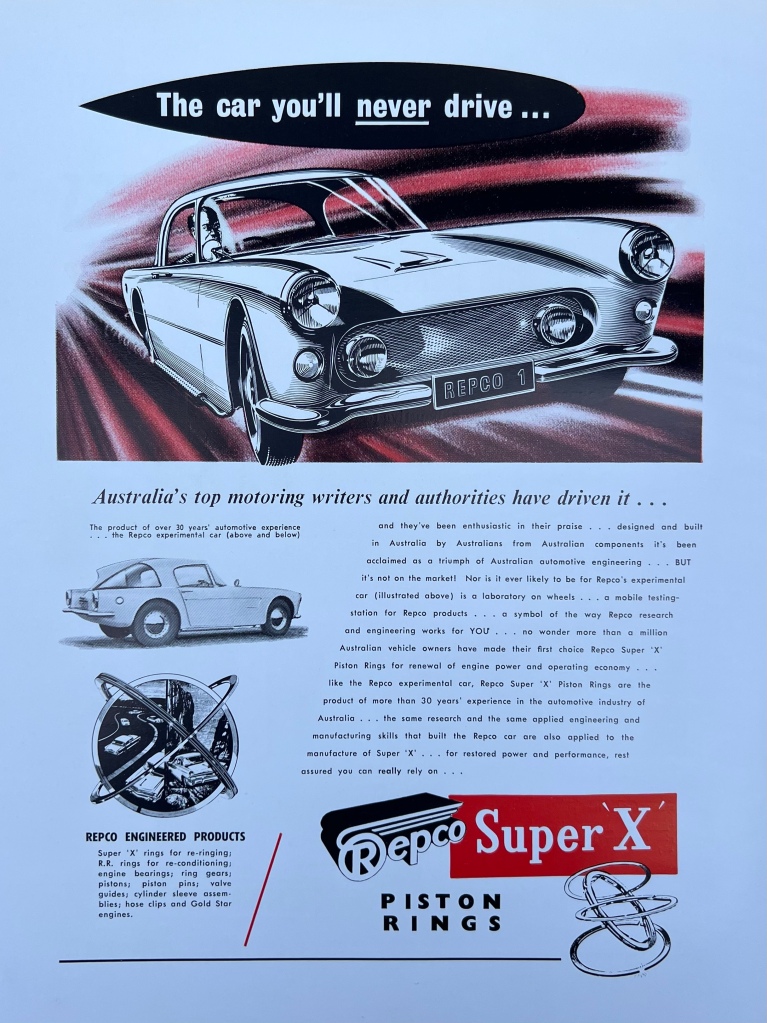
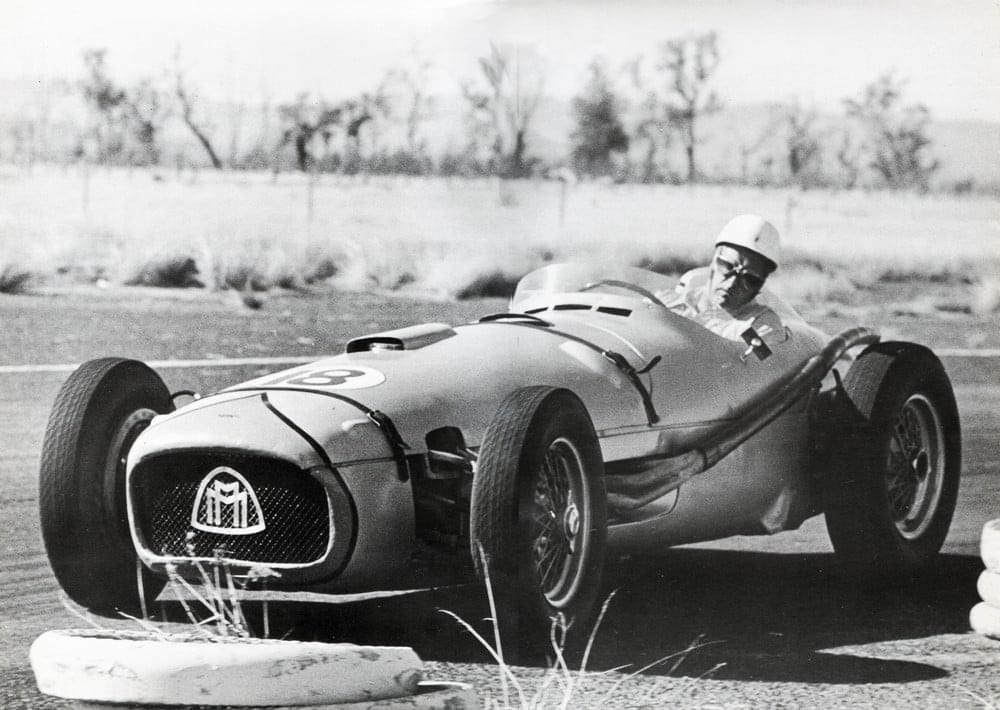
MAYBACH IV March- 1958…
ENGINE: Chevrolet Corvette 8 cyl. Vee motor. 4.6 litre. Compression ratio: 9.2:1. Bore and stroke: 98.501 × 76 mm stroke. 2 four-barrel Carter Carbs. 274 b..p. at 6,000 r.p.m. 300 Ibs. torque at 3,500 r.p.m. All oilways completely modified. Bearings altered in regard to oil ways. Engine dry sumped. Modified cooling system.
GEARBOX: As previous Maybach. Drive: As previous Maybach. Differential: As previous Maybach modified with shortened axles incorporating constant velocity joints. Clutch: Seeliger designed and built multi-plate clutch.
CHASSIS: As previous Maybach but chassis lengthened lo take Di Dion rear end. New 30 gallon fuel tank fitted.
Suspension: As previous Maybach with mods. to front end by fitting an anti-roll bar incorporating brake forque rods and transverse leaf in place of quarter eliptics at rear.
Dimensions: Same as previous Maybach, but rear track widened to 4 ft. 2 ins. All up weight reduced to 14} cwt. with 4 gals. of petrol. Full oil and water.
NOTES: Ern Seeliger first ran Maybach 4 at Fishermans Bend in March 1958.
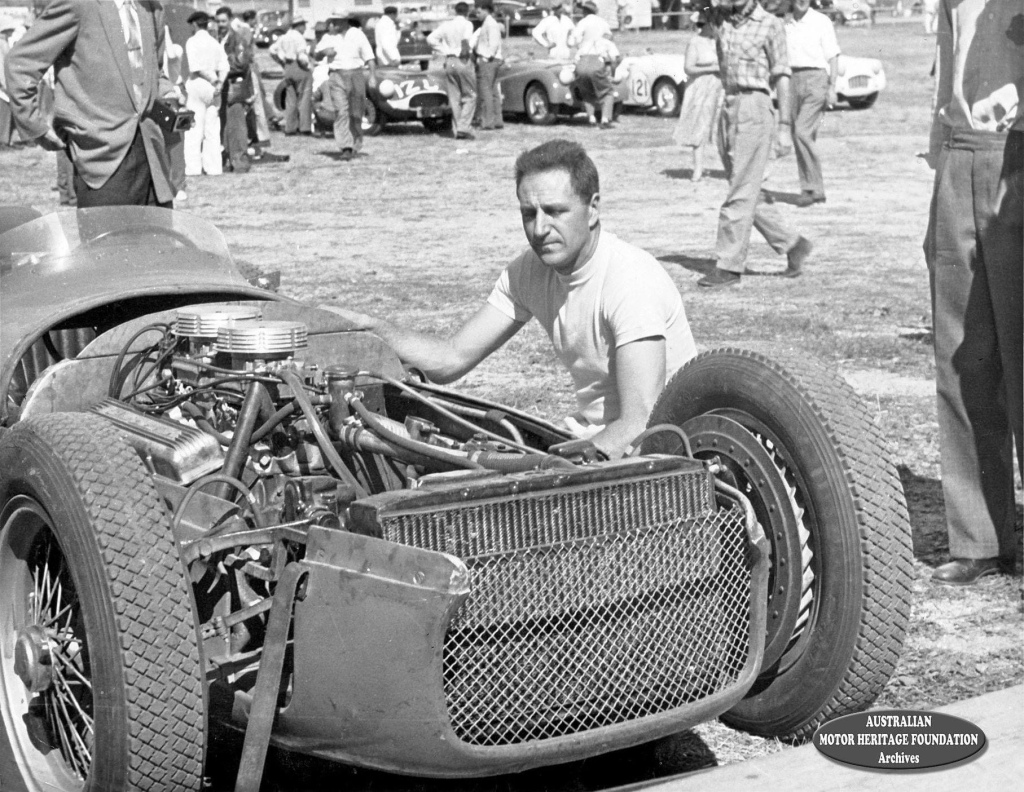
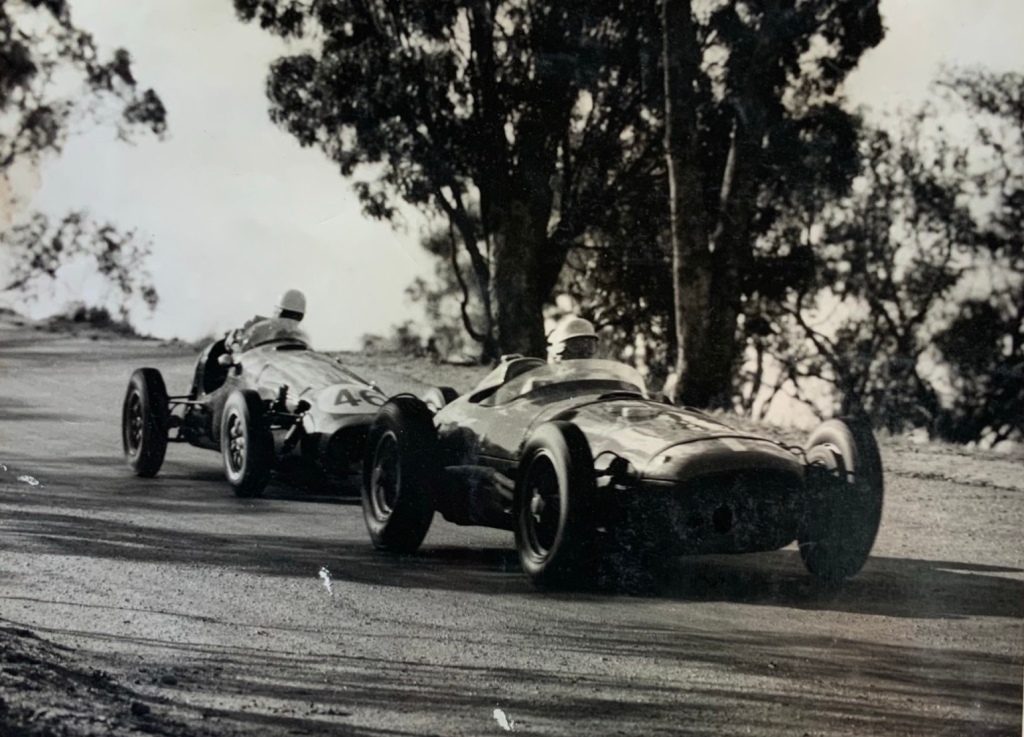
In one of The Great Australian Grands Prix, Stan Jones, Maserati 250F, Lex Davison, Ferrari 500/625 and Ted Gray, Tornado 2 Chev battled up front for most of the ‘58 race on Mount Panorama until Lex was the last-man-standing. Ern Seeliger drove a great race into second, with Tom Hawkes third in his much modified ex-Brabham Cooper T23 Repco-Holden.
Jones proved further the pace of Seeliger’s final Maybach evolution by winning a Gold Star round in it at Port Wakefield in 1959. It would have been very interesting to see what times Stan could have done in Ern’s car in practice at Bathurst over that ’58 AGP weekend!
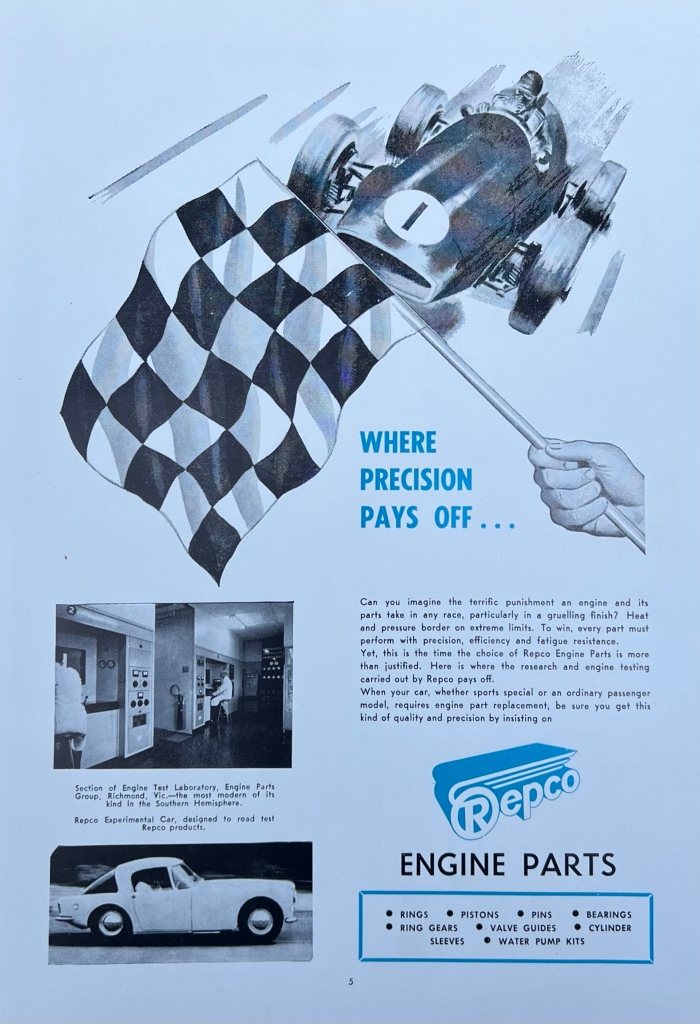
Etcetera…
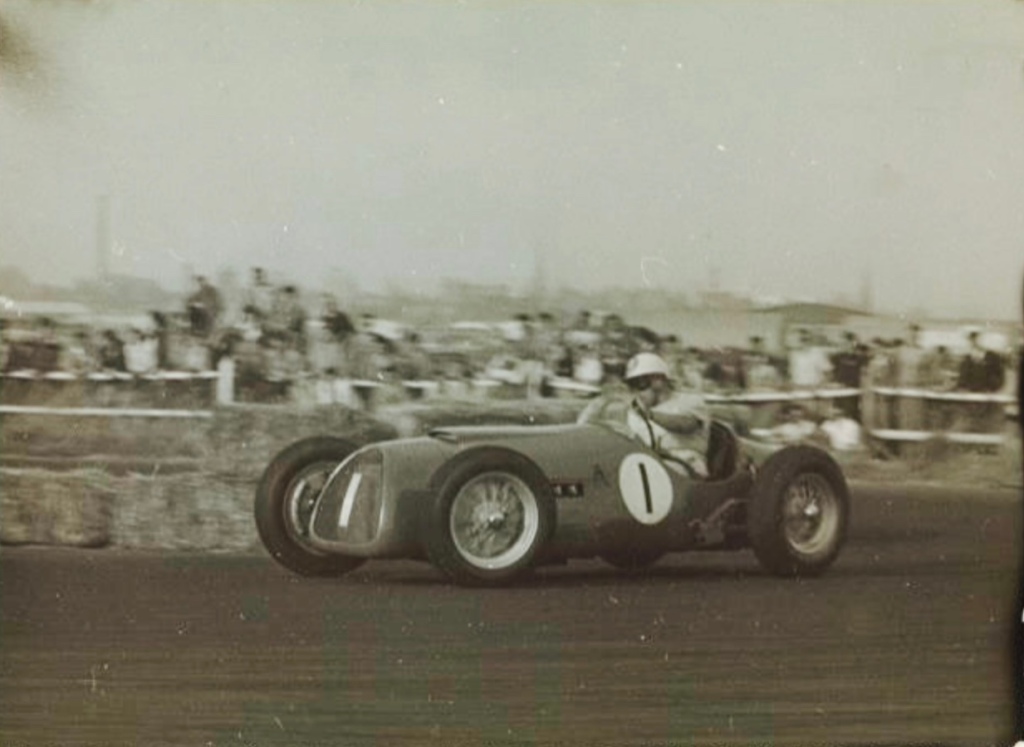
Prettiest of the lot in my opinion…Stan the Man on the way to winning the Victorian Trophy at Fishermans Bend in 1954, Maybach 2.

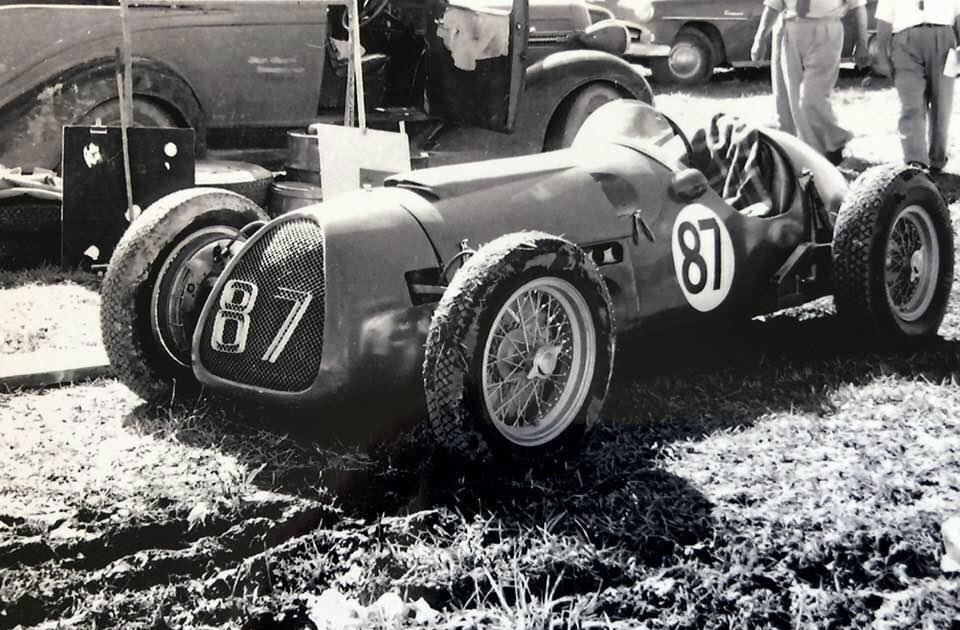
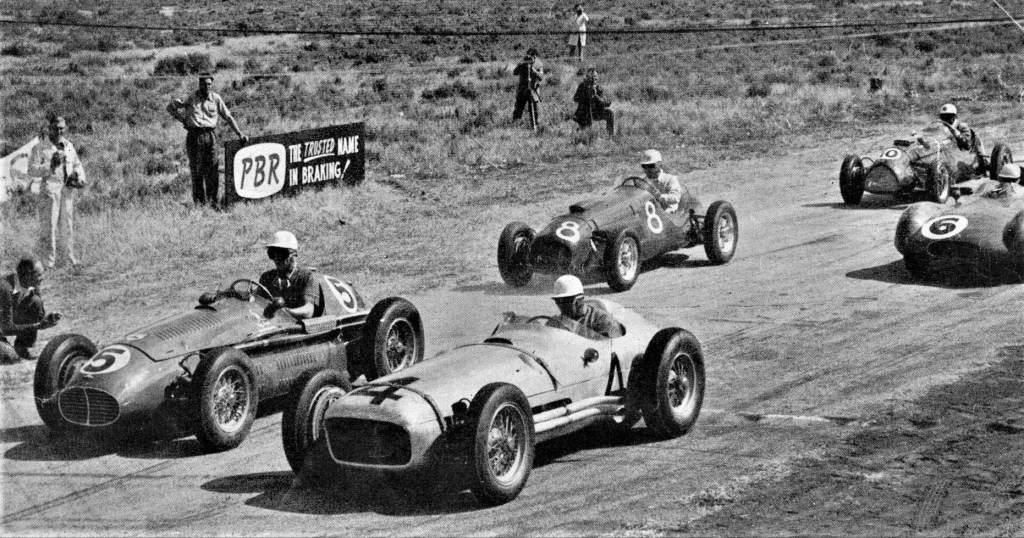
Starting grid of the 1955 Australian GP (or is a heat, whatever) at Port Wakefield, South Australia. #5 Reg Hunt, Maserati A6GCM/250, Jones, Maybach 3, #8 Tom Hawkes, Cooper T23 Bristol, #6 Jack Brabham in the winning Cooper T40 Bristol and #10 Kevin Neal, Cooper T23 Bristol.
This is a good contextual shot showing Jones in Maybach 3 – Mercedes W196 styling influence clear – among current’ish European cars: Reg Hunt’s Maserati A6GCM 2.5 – the so-called interim 250F – two Cooper T23s of Tom Hawkes #8 and Kevin Neal. Plus the nose of the winner and newest car here, Jack Brabham in the mid-engined Cooper T40 Bristol he built in time for the British Grand Prix at Aintree that July.
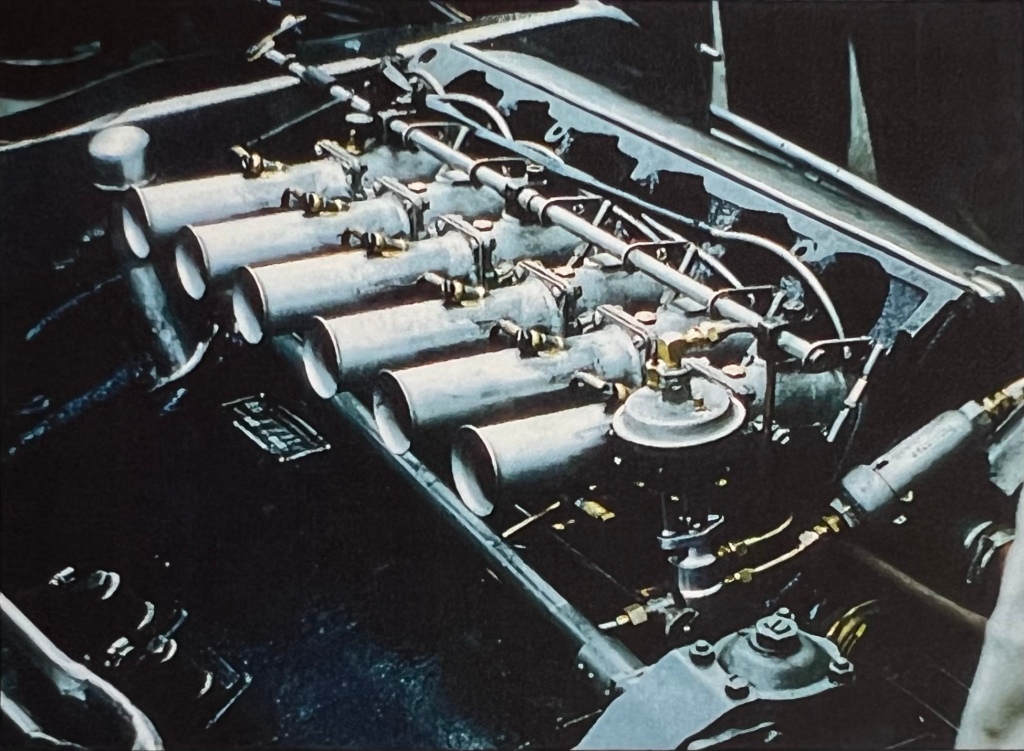
The final evolution of the Dean/Repco Research Maybach engine development programme. ‘Short-stroke’ 3.8-litre and fuel injected delivering circa 260bhp @ 5000rpm. George McKaige took this shot of Maybach 3 at Fishermans Bend in October 1955. I wonder what that plate in the engine bay says?
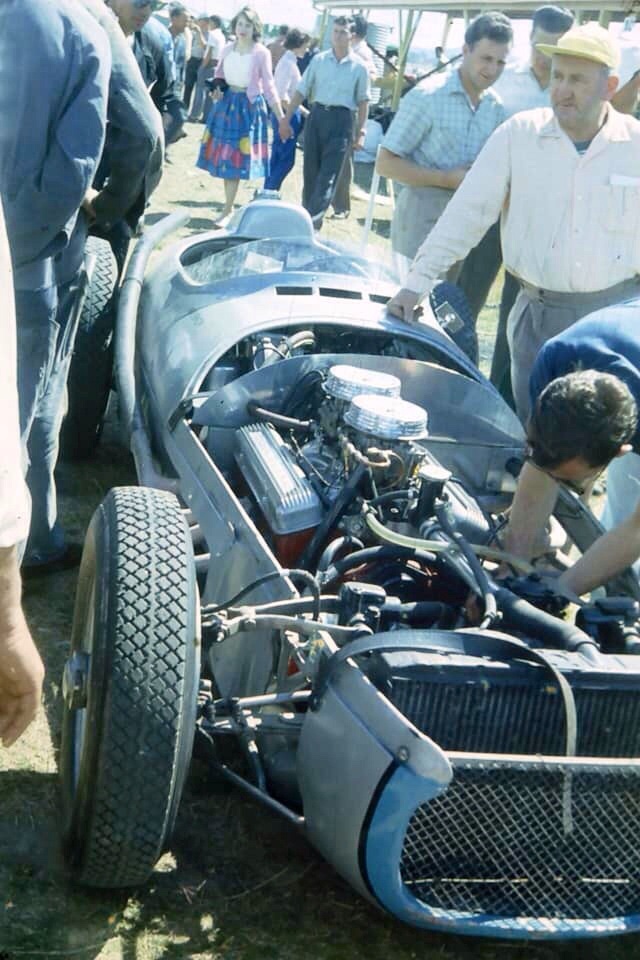
Great colour photograph of Maybach 4 Chev in the Lowood paddock inJune 1959. Note how the twin-Carter-carbed Corvette 283 V8 is offset to the right allowing the driver to sit low to the left rather than high atop the driveshaft.
Credits…
Australian Motor Sports Review 1958-59, Brian Caldersmith, Brier Thomas, Jock Tsaros, Davey-Milne Family Collection, George McKaige and Chester McKaige via their superb two ‘Beyond The Lens’ books, Stan Griffiths, Dacre Stubbs, VSCC Vic Collection, J Montasell, Clem Smith, Quentin Miles, Ron Edgerton Collection
Tailpiece…
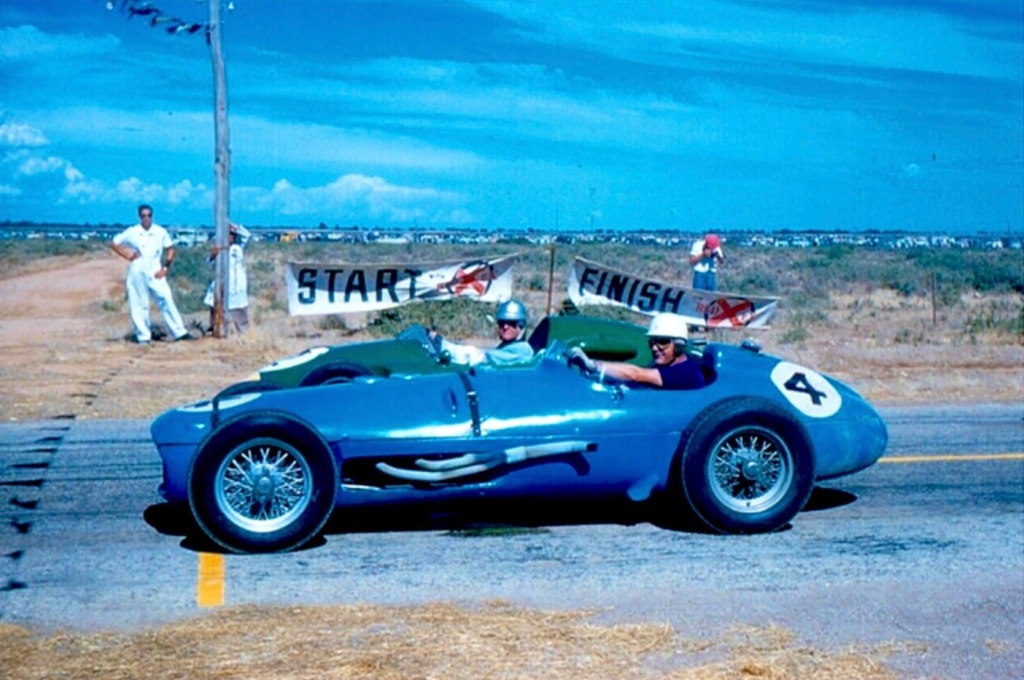
Towards the end of a very long competitive Maybach road.
Stan Jones lines Maybach 4 Chev up alongside Alec Mildren’s tiny, mid-engined 2-litre Cooper T45 Climax before the start of the South Australian Trophy, Port Wakefield Gold Star round in March 1959.
Jones won the race from Len Lukey and Keith Rilstone – it was the last championship level win for Maybach in-period.
Finito…
Great read marko !
Kind regards,
Andrew McCarthy
Senior Client Adviser
Bell Potter Securities
Ph: 03 9235 1634
Fax: 03 9235 1635
Mob: 0412 127 845
Email amccarthy@bellpotter.com.au
Great article ! I know you want us to focus on the Maybach engineering, but in that second last photo, all I can see is colourful skirt and pink cardigan. Those old photos are amazing
This fabulous article touches every version ever made of the Maybach presented from the time I was eight years old and, at Bathurst, I saw them all race!
The photo of Maybach in the Pits Southport LHS person is my father Owen .
Thanks Rob,
I’ve changed the caption accordingly; ninth in the AGP for Owen in the MG Holden Spl that weekend was a pretty good dividend on a very long trip!
Mark
As a much younger person I recall seeing Maybach mark four on display in a window in White Horse Road Balwyn.
I think it was Corvette powered by then?
I cannot recall what business it was but I guess it was for sale??
I know the originators lived in this area?
A very good comprehensive article on an important topic. A great Australian Racing car the like of which we will never see again
Iain R
Mark,
There are a couple of references above to the “1956 South Pacific Trophy ” held at Gnoo Blas. I see that the race name used at the time in the Australian Motor Sport report was “South Pacific Championship for Racing Cars”.
Cheers,
Rob B.
Cheers Rob,
South Pacific Championship will do me.
Mark